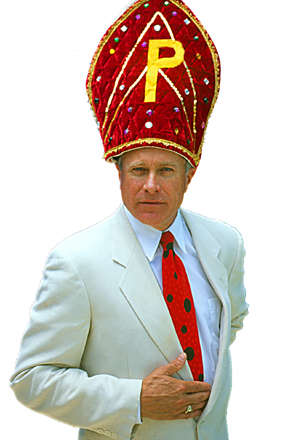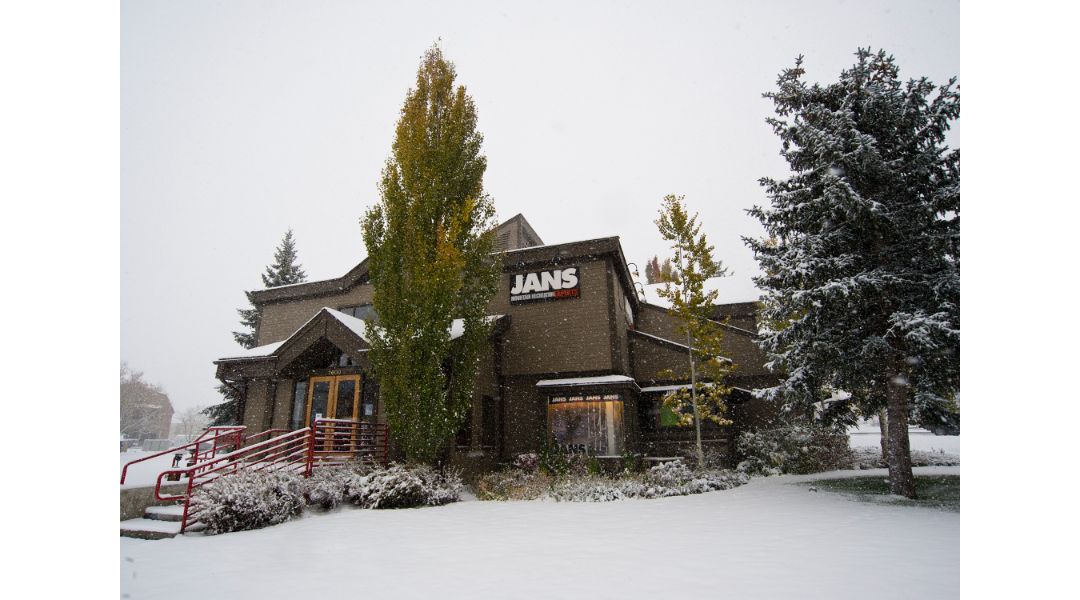
Jan’s in Park City, UT has maintained an impeccable reputation for customer service since it first opened its doors under founder Jan Peterson.
In this week’s Revelation, I share the backstory behind Jackson’s List, a new feature on Realskiers.com. Jackson’s List is, as the name implies, a list, in this case a searchable list of U.S. specialty ski shops that represent the best America has to offer. I call it Jackson’s List because it is solely my creation; I am the final arbiter of who is on the list and who is not.
My interest in identifying America’s best shops is intimately entwined with how Realskiers.com attends to the needs of its members. One of the principal perks of membership in Realskiers is direct access to me, so I can personalize a solution for each inquiry. For my recommendations to be realized, the customer must have access to a ski shop capable of meeting the needs at hand.
Of course, many of my members already have a favorite shop, but for those whose allegiance has yet to be won, how do they know which of their possible alternatives will deliver the necessary services?
I’d love to be able to say, “Visit your nearest ski shop,” but that may not be your best option. You see, it’s vital that the shop you patronize knows how to fit ski boots, which is not a talent one acquires accidentally. Chain sporting goods stores, to the limited degree to which they are a factor at all in the ski trade, seem institutionally incapable of cultivating or retaining competent bootfitters.
But if chain stores were the only problem, I could just say, “Don’t buy at a big-box store,” and be done with it. But there’s more than one way to be bad, and it won’t be as evident as the architecture of its exterior.
Allow me to veer slightly off my main line of argument to talk about the origin and evolution of the specialty ski channel. Specialty ski shops usually begin as single-location, family-run affairs where the culture is set by the founding fathers and mothers.
But no one lives forever, and eventually ownership will pass to a new generation or another new owner; some transitions are smooth, but many are not. The history of the past 40 years in ski specialty retailing is littered with second-generation train wrecks. And absorption into a larger network with centralized buying and attendant loss of local agency also has a spotty success rate.
Point being, any shop can claim to be stocked to the hilt with genuine experts; not many can back that up. There are only about 300 store fronts on Jackson’s List, which isn’t a lot for a nation with as many skiers as the U.S. Remember, Jackson’s List makes no pretense of being all-inclusive; quite the contrary, the whole point is to cull the field down to those most likely to be competent where it counts.
How We Got Here
One might well wonder just how we got to the point where the ranks of specialty shops have been decimated and big-box outlets rendered irrelevant. Somehow, over the course of three decades, the way skis were made, marketed and distributed gradually turned upside-down.
Allow me to elucidate. Thirty years ago, by far the largest segment of the ski market was occupied by its lowest rung: cheap skis were packaged with entry-level bindings and sold by the boatload. In the fall, full-page newspaper ads ran to several pages as competing chains tried to entice bargain hunters. Chains like Herman’s, Gart’s, Cook’s, Sports Authority, Wolfe’s, Sunset, Sport Chalet and Oshman’s moved tens of thousands of units annually.
Above the price basement were a couple of intermediate levels that attracted the more experienced skier. This, too, was a robust marketplace. At the top of the pyramid were race skis, which were the undisputed choice of all experts, whether they raced or not.
Now the base of the pricing pyramid has shrunk to a dull point as all the chains cited above, and all others like them, are gone. There’s still a mid-market segment that serves the less active, less addicted skier, but by far the market’s largest, single slice teeters at the top.
What the hell happened?
From a product and positioning standpoint, the seeds of change were sown in the early 1990’s, when three seismic ideas began their rise to dominance:
- Rupert “Killy” Huber created the Atomic Powder Plus, around which coalesced a new category of wide-body powder skis.
- Designers at Elan, Jurij Franko and Pavel Skofic, concocted the SCX (for SideCut eXperiment), Ivan Petkov debuted the S ski and Kneissl rolled out the Ergo, kicking off the Carving ski revolution.
- Salomon followed up the launch of its monocoque ski line – all race skis, as befit the times – with a market segmentation story that made it possible to create today’s top-heavy market.
What Salomon did was position three skis – and attendant skier types – at the top of the product pyramid, where there used to be one. In addition to a Race line, called Equipe, Salomon added a Force model for the mogul skier and the EXP for the proficient technical skier or high-level instructor.
The proliferation of shaped skis, wide-spread adoption of fat skis and the creation of an expert-level (equating to high price) model at every 10mm increment in waist width between 65mm and 120mm, enabled the modern ski market to survive. As the overall market for Alpine skis shrank – eroded by
- the collapse of the 2,000,000-pairs-a-year Japanese market,
- the incursion of convenient rental outlets that deflected the huge population of first-price-point ski buyers out of the retail channel and
- a growing tendency among destination travelers to rent demos in lieu of buying, driven in large part by $50/bag surcharges (Thanks, United!),
ski suppliers had to find a way to raise their average selling price.
The easiest way to convert low-margin sales into high-margin sales is to create more options at the high end and fewer at the bottom, which is where we find ourselves today. The ski trade has successfully trained the ski buyer to view the market horizontally, across an array of a dozen categories – with the top models all at roughly the same cost – rather than vertically, with models at every price point from $399 to $999.
The net effect of the culling of the first-generation specialty shops and the simultaneous collapse of the sporting goods chains is that the overall quality of the ski channel to market has declined. It’s not that the present-day ski buyer has restricted choices; there are still plenty of shops selling ski gear who didn’t make Jackson’s List, and most manufacturers, large and small, are more than happy to sell directly to anyone. If you toss rental shops and Internet-only vendors on the pile, there are probably more “storefronts” trading in ski gear today than there were 3 decades ago.
But it’s who toils behind those shingles, whether B&M or digital, that determines the quality of the equipment-buying experience. The definition of “quality” in this instance depends 100% on bootfitting skills. There is no more pivotal decision you will make than your choice of shop and bootfitter. A properly fit boot opens the door to better skills, greater safety, more confidence and far less pain.
There is no second-best experience. If a ski boot is misfit or flat-out wrong for you, you will suffer, and not just from money ill-spent.
The real pity is, you may not do anything about it for another decade. People hold onto their boots, whether they fit well or not, for years. I think part of the reason skiers hold onto ill-fitting boots is they’d rather ski in discomfort than endure another mis-managed bootfitting session.
I get it: people don’t like going to the dentist even if they have a toothache. And there’s no guarantee your next bootfitting session will go swimmingly. But you can reduce the odds of failure by following these three simple steps:
- Select a shop from Jackson’s List, ideally one that you’ll be able to re-visit.
- Make an appointment. If you have a target bootfitter, ask for him or her.
- Pay attention to what the bootfitter does in the first 5 minutes. (Refer to Chapter 4 of The Returning Skier’s Handbook.) Trust me, it will be obvious whether or not you’re in the right place.
Done properly, bootfitting takes an hour or more, which is plenty of time to talk ski options. I mention this because I don’t want you running off to the Internet to buy skis on the assumption you’ll get a better ski for less dough. In the case of a discontinued model, you can probably bottom-fish your way to a lower cost, but be advised that for a current model, retail pricing across the specialty retail channel is more or less the same.
Remember, it matters just as much where you buy your skis as where you buy your boots. Skis also need follow-up attention that you won’t find on the Internet. Chances are, the same guy or gal who shod your woeful feet (most feet past puberty qualify as woeful), knows a thing or two about skis. And having just fit your feet, he or she already knows a lot about you. That knowledge is worth a great deal to you, so tap into it.
There’s one caveat about ski selection that can’t be repeated often enough, so I’ll reiterate it here: unless you’re spending almost all your time in off-trail conditions, extra width will be more hindrance than help.
Before I dismount my soapbox, permit me to make a couple of closing comments. One, don’t forget to tip your bootfitter. Any gesture is better than none.
Two, if you’re a ski retailer, and your shop made Jackson’s List, and you’d love to show your appreciation as long as it doesn’t cost any money, feel free to post a link to Realskiers.com on your website’s home page. Your support would greatly help the cause.
Three, Jackson’s List is not meant to be carved in stone. If such a list existed ten years ago, it would have been different, and I suspect it will look differently ten years from now. Most likely, my current list could stand improvement. So, I expect it to evolve.
Which brings me back to my central theme: why did I bother to create Jackson’s List?
The main reason I created Jackson’s List in the first place was because I could.
Every existing bundle of ski retailers operates essentially as an exclusive club, whether it be a buying collective or retail distribution network. Naturally, they all promote their membership and exclude non-members.
Jackson’s List is also highly selective, but the only criterion is excellence. I don’t care what lines a shop buys, but I care very much how they sell whatever it is they buy. And no one pays a nickel to be on the list.
My only objective behind creating Jackson’s List is to help skiers and specialty ski shops find each other. Please help me help you; if you know a shop that you feel belongs on Jackson’s List, let me hear about it.
Ultimately, this list is your list, not mine. Together, maybe we can get it right.

